Gophers and groundhogs are often confused due to their similar appearances and burrowing habits. While both can damage property and vegetation, understanding the key differences between gopher vs groundhog can help you properly identify and address pest issues on your property.
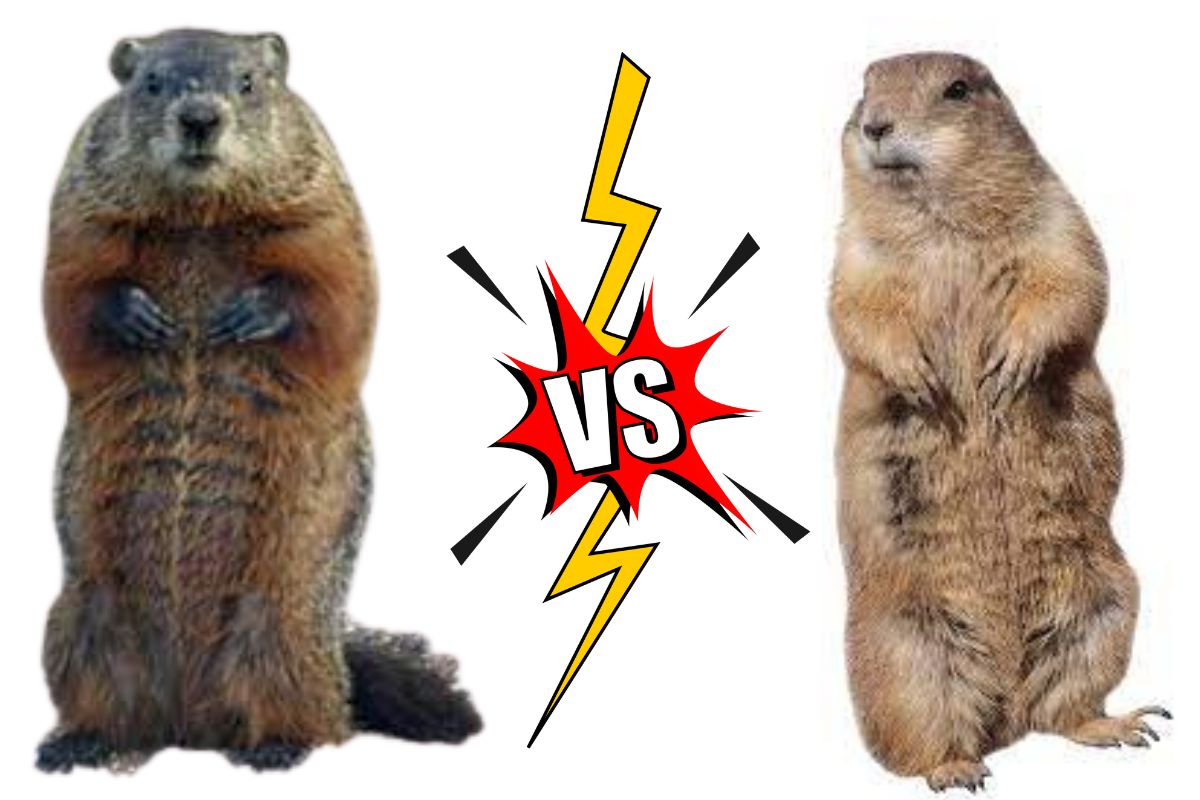
Groundhogs are significantly larger than gophers, with adults weighing 5-12 pounds compared to gophers’ half-pound to one-pound weight. Groundhogs spend much of their time above ground during warmer seasons and hibernate in winter, while gophers remain primarily underground year-round. Gophers have distinctive yellow, protruding incisors and fur-lined cheek pouches for storing food.
- Physical Differences Between Gopher vs Groundhog
- Behavioral Differences
- Habitat and Distribution
- Burrowing Habits
- Diet and Feeding Behavior
- Hibernation vs. Year-Round Activity
- Distinctive Physical Features
- Identification Tips for Homeowners
- Control Methods Comparison
- Frequently Asked Questions
- Conclusion
Physical Differences Between Gopher vs Groundhog
| Characteristic | Gopher | Groundhog |
|---|---|---|
| Scientific Classification | Family: Geomyidae Genus: Geomys |
Family: Sciuridae Genus: Marmota |
| Size |
|
|
| Fur Color | Brown soil-colored, with variations from black to nearly white | Yellowish-brown or brown with white-tipped guard hairs and white fur around the nose |
| Tail | Short, thin, pink, hairless | Long, thick, bushy |
| Teeth |
|
|
| Cheeks | External, fur-lined cheek pouches for storing food | No cheek pouches; slender face |
| Feet & Claws |
|
|
Behavioral Differences
| Behavior | Gopher | Groundhog |
|---|---|---|
| Habitat & Activity |
|
|
| Locomotion | Primarily burrows and digs | Burrows, digs, climbs, and swims |
| Vocalization | Typically silent; occasional high-pitched squeaks | Hisses, growls, shrieks; chatters teeth |
| Feeding Habits | Stores food in cheek pouches and hoards in burrows | Eats food on the spot (up to 1 pound daily in warm months) |
| Reproduction | 3 litters annually of 5-6 pups | 1 litter annually of 2-6 pups |
| Lifespan |
|
|
Habitat and Distribution
Gopher Habitat
Gophers inhabit prairie regions and areas with loose, sandy soil throughout North and Central America. They prefer environments where they can easily dig their extensive tunnel systems.
Groundhog Habitat
Groundhogs (also known as woodchucks) are found across Canada into Alaska and throughout the eastern and central United States. They prefer woodland areas adjacent to open fields where they can forage.
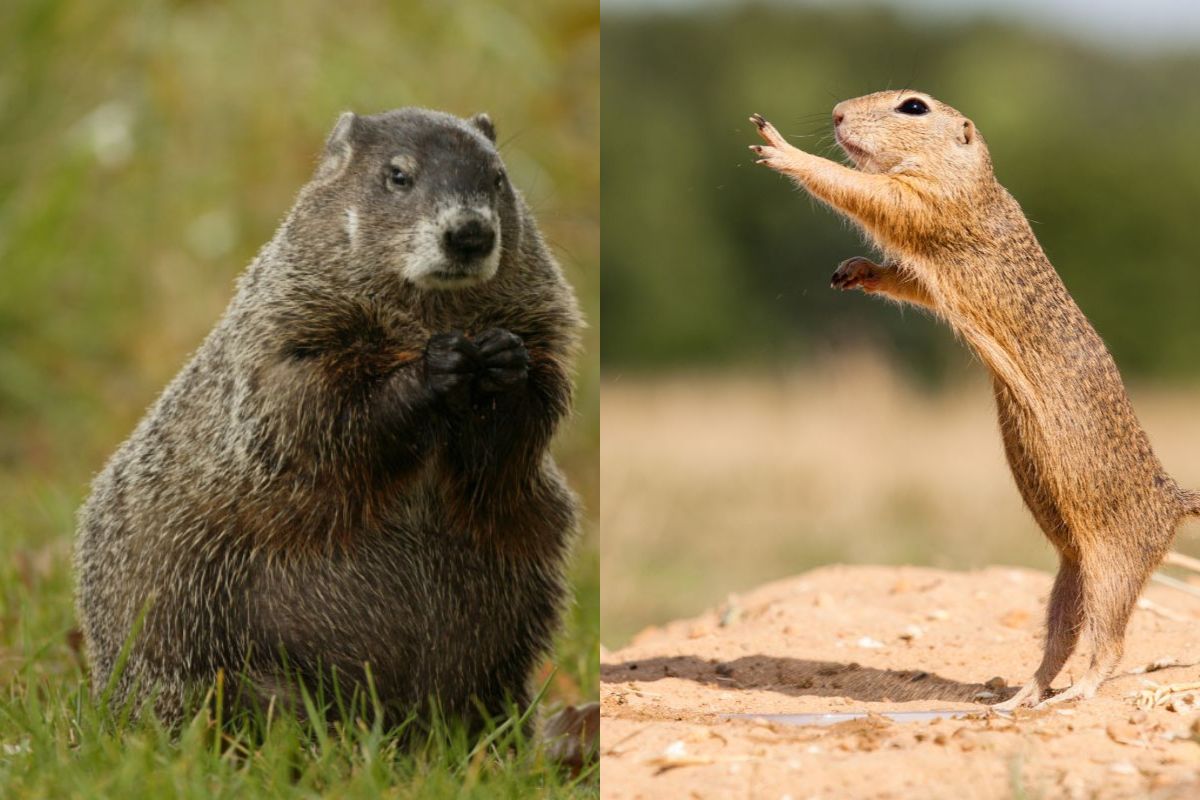
Burrowing Habits
The burrowing patterns of these two rodents reflect their different lifestyles and ecological niches:
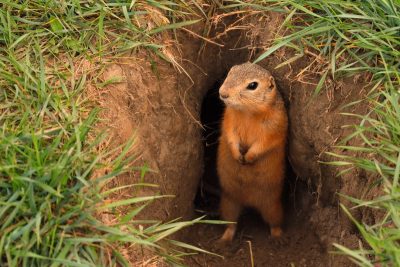
Gopher Burrows
- Complex, extensive tunnel networks
- Multiple chambers for different purposes (nesting, food storage, waste)
- Can extend hundreds of feet in total length
- Characterized by soil mounds with plugged holes
- Typically 4-12 inches below the surface
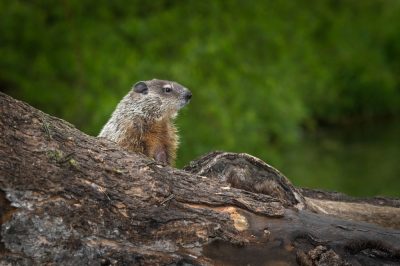
Groundhog Burrows
- Simpler burrow structure with 2-5 entrances
- Separate summer and winter dens
- Main tunnel typically 4-5 feet deep
- Open entrance holes (not plugged)
- Winter burrows include hibernation chamber

Property Damage Signs
- Gophers: Numerous small mounds in lines
- Groundhogs: Few large mounds with visible holes
- Gophers: Root damage to plants
- Groundhogs: Surface vegetation eaten
- Groundhogs: More visible structural damage
Diet and Feeding Behavior
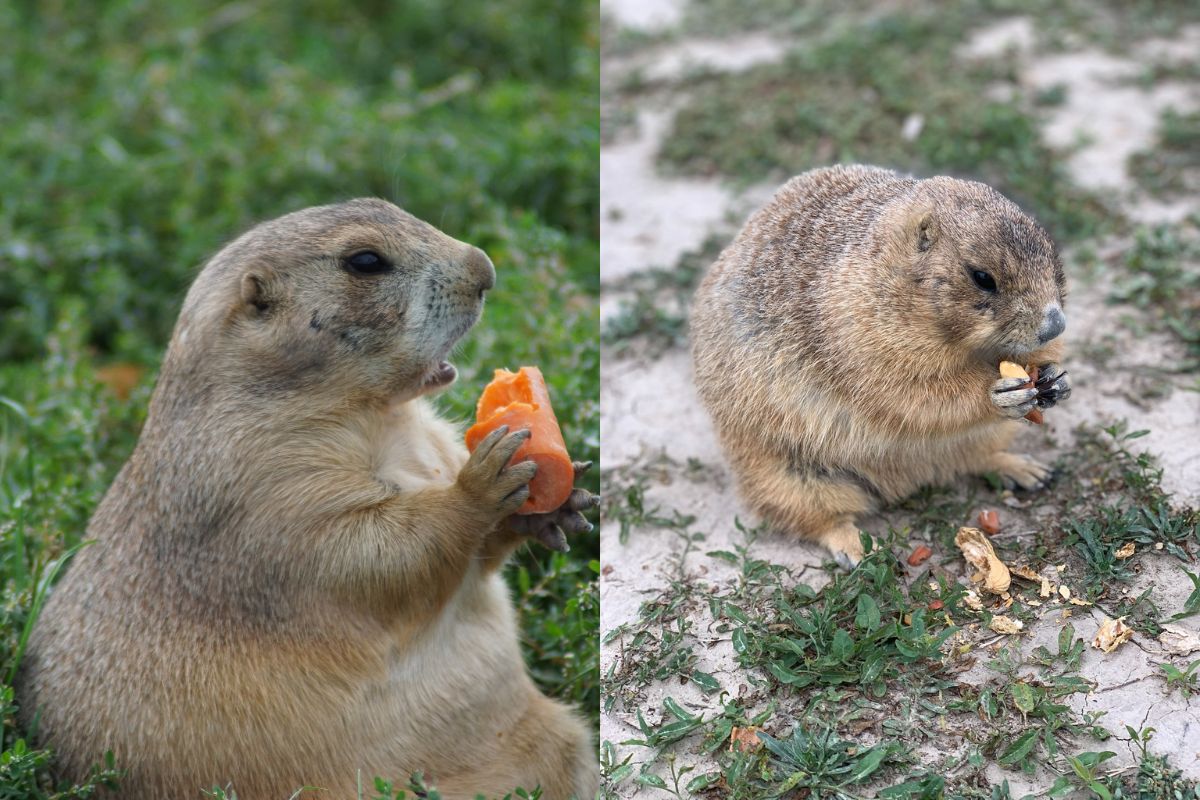
Both animals are primarily herbivores, but they have different feeding strategies:
| Feeding Behavior | Gopher | Groundhog |
|---|---|---|
| Primary Diet | Roots, tubers, and underground plant parts | Grasses, clover, fruits, vegetables, and tree bark |
| Feeding Pattern | Primarily feeds on plants from below the surface | Grazes above ground, especially in early morning and evening |
| Food Storage | Collects and stores food in underground chambers | Consumes food immediately, does not store |
| Garden Impact | Plants suddenly wilt as roots are consumed | Visible browse damage to leaves and stems |
Hibernation vs. Year-Round Activity
One of the most significant behavioral differences between these animals is their winter activity. Groundhogs are true hibernators, while gophers remain active year-round, though they spend winter months primarily underground.
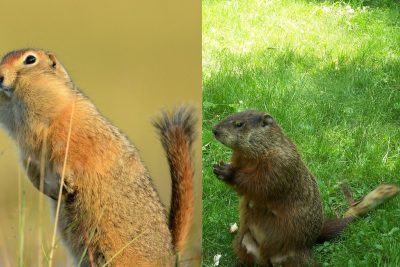
Gopher Winter Activity
- Does not hibernate
- Remains active year-round
- Relies on stored food
- Continues tunneling even under snow
- May be more active in spring and fall

Groundhog Hibernation
- True hibernator (late fall through early spring)
- Body temperature drops to ~40°F
- Heart rate slows to 5 beats per minute
- Special hibernation chamber in winter den
- Emerges when soil warms in spring
Distinctive Physical Features
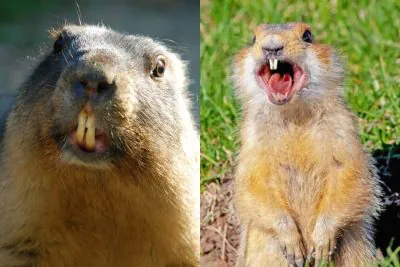
Gopher’s distinctive yellow incisors visible outside the mouth

Gopher’s expandable cheek pouches for storing food

Gopher’s expandable cheek pouches for storing food
Identification Tips for Homeowners
How to Identify Which Rodent Is on Your Property
- Mound appearance: Gopher mounds are crescent or horseshoe-shaped with a plug on one side; groundhog holes have visible openings with dirt spread out in a fan pattern.
- Number of holes: Gophers create many small mounds; groundhogs have few large, visible entrance holes.
- Time of activity: If you see the animal in winter, it’s a gopher (groundhogs hibernate).
- Damage location: Root damage from below is typically gophers; above-ground vegetation damage is usually groundhogs.
- Size: If you see the animal and it’s larger than a squirrel, it’s likely a groundhog; smaller is likely a gopher.
Control Methods Comparison
The control methods for these pests differ due to their distinct habits. Understanding which animal you’re dealing with is crucial for implementing the right solution.
| Control Method | Gopher Effectiveness | Groundhog Effectiveness |
|---|---|---|
| Trapping | Highly effective with underground tunnel traps | Effective with larger cage traps near burrow entrances |
| Exclusion Barriers | Wire mesh buried 2+ feet deep can be effective | Fencing at least 3 feet high with 1 foot buried or bent outward |
| Repellents | Castor oil-based products can deter gophers | Predator urine, garlic, and pepper-based repellents may help |
| Natural Predators | Owls, hawks, snakes, and coyotes | Foxes, coyotes, dogs, and hawks |
| Habitat Modification | Remove weeds and desirable plants from affected areas | Clear brush and woodpiles near structures |
Frequently Asked Questions
Is a gopher a baby groundhog?
No, gophers and groundhogs are entirely different rodent species. Gophers belong to the family Geomyidae and genus Geomys, while groundhogs (also called woodchucks) belong to the family Sciuridae and genus Marmota. They are not related beyond both being rodents.
Do gophers and groundhogs hibernate?
Groundhogs are true hibernators that sleep through the winter months. Their body temperature drops to about 40°F, and their heart rate slows to approximately 5 beats per minute to conserve energy.
Gophers, however, do not hibernate. They remain active year-round, though they primarily stay in their underground tunnel systems during winter, feeding on stored food reserves.
Which causes more property damage: gophers or groundhogs?
Both can cause significant property damage, but in different ways. Gophers primarily damage gardens and lawns by creating extensive tunnel systems and consuming plant roots from below. This results in plants suddenly wilting and dying. On the other hand, voles tend to feed on the above-ground parts of plants, gnawing at stems and leaves, which can lead to visible destruction in gardens and landscapes. To mitigate these issues, some gardeners opt to plant species known to deter these pests, such as plants that repel gophers. By incorporating these types of vegetation, homeowners can create a more resilient garden that can withstand the threat of these burrowing rodents. In contrast, moles cause damage by burrowing through soil, which can lead to uneven surfaces and displacement of soil. This disruption can affect not only the aesthetics of a lawn but also the health of the grass and other plants. To effectively manage these nuisances, various gopher control methods explained can help homeowners protect their gardens and ensure their plants thrive. Moles, on the other hand, are less likely to feast on the plants themselves; instead, they create shallow tunnels that disrupt the soil structure and can lead to uneven ground. This gopher and mole comparison highlights the distinct nature of their damage, with gophers directly impacting the health of the plants while moles can create hazardous conditions for foot traffic. Understanding their differing behaviors can help homeowners implement more effective control measures.
Groundhogs can cause structural damage to decks, sheds, and foundations with their larger, deeper burrows. They also consume above-ground vegetation and can quickly devastate gardens. Generally, a single groundhog can cause more visible damage than a single gopher, but gopher colonies can be more destructive over time.
How can I tell if I have gophers or groundhogs?
Look at the mounds and holes. Gopher mounds are typically horseshoe or crescent-shaped with a plug on one side. Groundhog holes are larger (6-12 inches in diameter) with visible openings and dirt spread in a fan pattern.
Also, consider when you see activity. If you observe activity in winter, it’s likely gophers since groundhogs hibernate. Groundhogs are most active during early morning and evening hours in warmer months.
What’s the difference between a groundhog and a woodchuck?
There is no difference—”groundhog” and “woodchuck” are two common names for the same animal (Marmota monax). Other regional names for this rodent include “whistle pig” and “land beaver.”
Conclusion
Understanding the differences between gophers and groundhogs is crucial for proper identification and effective pest management. These rodents may appear similar at first glance, but they differ significantly in size, appearance, behavior, and habitat preferences.
Groundhogs are much larger than gophers, with adults weighing 5-12 pounds compared to gophers’ half-pound to one-pound weight. Gophers have distinctive yellow, protruding incisors and external cheek pouches, while groundhogs’ teeth remain inside their mouths and they lack cheek pouches. Groundhogs hibernate in winter, whereas gophers remain active year-round. Identifying which pest is on your property is the first step toward implementing effective control measures.


